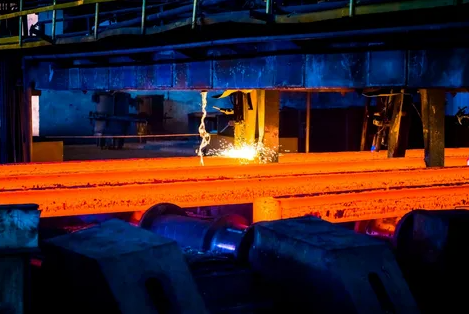In July, signs of some stabilization after the June recession appeared on the steel market. Cast iron smelting and steel remained at the level of last month, and the production of finished rental was reduced by 2%. Some analysts believe that the indicators have reached a minimum in the current cycle, but others are waiting for a deterioration in the situation.
The production of the main types of ferrous metallurgy products in July remained approximately at the level of June, it follows from the preliminary data of Chermet's corporation. Cast iron smelting remained at the level of 4.1 million tons, steel - 5.7 million tons.
The production of finished rental decreased by about 2%, to 5 million tons.
regarding July 2024, the release of cast iron, steel and finished rental decreased by 3%, 2.5% and 1.4%, respectively. The products reached 29.9 million tons, 40.3 million tons and 35.2 million tons, which is 0.6%, 5.1% and 5.3% less than a year earlier.
in June, the decline in production in a month was more noticeable. According to Chermet Corporation, the release of cast iron fell by 8.9%relative to May, steel by 5%, and the finished rental - by 1.9%. In May, relative to April, on the contrary, an increase in production was noted (see “Kommersant” of June 11).
The stabilization of indicators in July is temporary. “Above, it reflects the bottom of the current cycle than the beginning of the restoration .. reduction of internal demand for steel continues, the analyst continues, has reached a critical level in the conditions of slowing down the construction sector, as well as a decrease in consumption in mechanical engineering.
July statistics confirmed the preservation of an adverse situation in metallurgists in the domestic market. The internal prices for steel again switched to a decrease from July, by 2%, after a small rebound in June. The upcoming decline in connection with the summer seasonality in the construction industry will additionally affect the reduction in consumption in the domestic market, each fifth construction company can become bankrupt by 2026.
exports, remains under the pressure of sanctions and structural factors: the need to provide discounts of 15-30% to attract logistics costs and tough competition. Additionally, the competitiveness of exporters reduces the strengthening of the ruble. Companies are forced to export to a loss in order to maintain the loading of production capacities and prevent stoves to stop.
Tighten competition with Chinese factories in the world market is also noted by analysts. According to them, in the first week of August, the cost of Russian steel blank in the Black Sea ports decreased by 1% of the previous week, to 450–455 per ton (FOB). The further decrease in quotations is predicted due to weak demand and competition from cheaper Chinese material. So, in Tanshan






